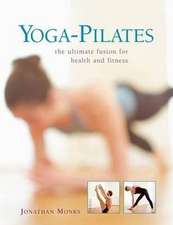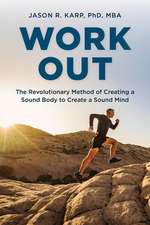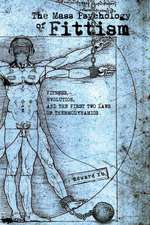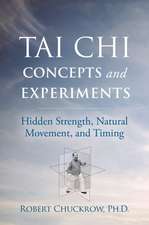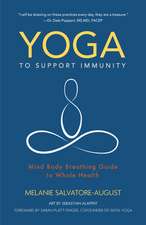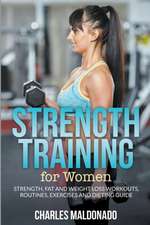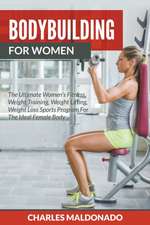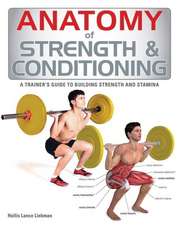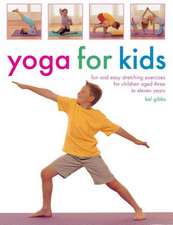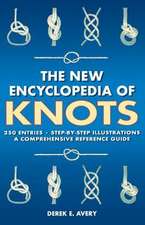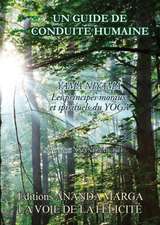Practical Guide to Exercise Physiology
Autor Robert Murray, W. Larry Kenneyen Limba Engleză Paperback – 21 feb 2016
Practical Guide to Exercise Physiology guides readers through the scientific concepts of exercise physiology with highly visual, easy-to-follow content. The text applies complex concepts of physiology to exercise program design, giving personal trainers, strength and conditioning specialists, and other health and fitness professionals an accessible resource to use with their clients. Written specifically for those in the fitness industry, the text covers various training goals and considerations when working with clients and athletes at all levels.
This guide takes an application-based approach in describing intricate physiological processes so that professionals can select and explain the appropriate exercises and physical activity regimens for clients. The text is complemented by medical artwork that puts complex systems in a digestible visual context. These systems are then applied to real-world practice through explanations of exercises that are beneficial to specific body systems and instructions on combining various exercises to achieve the desired results.
Part I of Practical Guide to Exercise Physiology is a review of the fundamentals of physiology, including muscles and muscle adaptation, bioenergetics, and the cardiorespiratory system. It also details the various activities and processes that contribute to fatigue. Part II applies and expands on this information to address the design of training programs for achieving specific goals. These goals include increasing muscle mass and strength; losing weight; and developing speed, power, and aerobic endurance. Finally, part III addresses adaptations and special considerations of these training programs, including adjustments for changes in altitude or temperature and considerations for special populations such as children, older adults, and pregnant women.
Alongside the content and illustrations, Practical Guide to Exercise Physiology includes tools that apply concepts to everyday practice:
- Factoid boxes engage readers with additional facts about the human body and its response to training.
- Sidebars throughout the text pinpoint current topics of concern so that personal trainers and fitness professionals can prepare for and respond to these issues.
- An index of common questions from clients is an easy reference on client education.
- Sample training programs illustrate how the scientific concepts that guide program design are used in practice.
Practical Guide to Exercise Physiology contains all the necessary information for new and current personal trainers and fitness professionals. Readers will gain confidence in designing exercise programs for various populations and the ability to explain to clients how each exercise and movement will help them achieve their goals.
Preț: 192.91 lei
Nou
36.91€ • 38.54$ • 30.55£
Carte în stoc
Livrare din stoc 25 februarie
Specificații
ISBN-10: 1450461808
Pagini: 208
Ilustrații: 106 illustrations, 98 photographs
Dimensiuni: 217 x 278 x 14 mm
Greutate: 0.72 kg
Editura: Wiley
Descriere
Practical Guide to Exercise Physiology guides readers through the scientific concepts of exercise physiology with highly visual, easy-to-follow content. The text applies complex concepts of physiology to exercise program design, giving personal trainers, strength and conditioning specialists, and other health and fitness professionals an accessible resource to use with their clients. Written specifically for those in the fitness industry, the text covers various training goals and considerations when working with clients and athletes at all levels.
This guide takes an application-based approach in describing intricate physiological processes so that professionals can select and explain the appropriate exercises and physical activity regimens for clients. The text is complemented by medical artwork that puts complex systems in a digestible visual context. These systems are then applied to real-world practice through explanations of exercises that are beneficial to specific body systems and instructions on combining various exercises to achieve the desired results.
Part I of Practical Guide to Exercise Physiology is a review of the fundamentals of physiology, including muscles and muscle adaptation, bioenergetics, and the cardiorespiratory system. It also details the various activities and processes that contribute to fatigue. Part II applies and expands on this information to address the design of training programs for achieving specific goals. These goals include increasing muscle mass and strength; losing weight; and developing speed, power, and aerobic endurance. Finally, part III addresses adaptations and special considerations of these training programs, including adjustments for changes in altitude or temperature and considerations for special populations such as children, older adults, and pregnant women.
Alongside the content and illustrations, Practical Guide to Exercise Physiology includes tools that apply concepts to everyday practice:
- Factoid boxes engage readers with additional facts about the human body and its response to training.
- Sidebars throughout the text pinpoint current topics of concern so that personal trainers and fitness professionals can prepare for and respond to these issues.
- An index of common questions from clients is an easy reference on client education.
- Sample training programs illustrate how the scientific concepts that guide program design are used in practice.
Practical Guide to Exercise Physiology contains all the necessary information for new and current personal trainers and fitness professionals. Readers will gain confidence in designing exercise programs for various populations and the ability to explain to clients how each exercise and movement will help them achieve their goals.
Cuprins
Part I. Warming Up: Physiology 101
Chapter 1. Muscles Move Us
How Do Muscles Work?
How Do Muscles Adapt to Training?
How Do Muscle Cells Get Bigger and Stronger?
Chapter 2. Food Really Is Fuel
From Food to Energy
How Do Nutrients Fuel Muscle?
What About Vitamins and Minerals?
Water Is a Nutrient, Too
Chapter 3. Muscles Need Oxygen
How Does Oxygen Get to Muscles?
How Does Oxygen Use Relate to Fitness and Energy Expenditure?
How Does Training Help the Body Use More Oxygen?
Oxygen Delivery and Performance Enhancement
Chapter 4. Fatigue: What Is It Good For?
What Causes Fatigue?
What’s the Difference Between Fatigue and Overtraining?
What Role Does Fatigue Play in Adaptations to Training?
Part II. The Science of Training Program Design
Chapter 5. Principles of Designing Training Programs
What Are the Basics of Program Design?
What Makes an Effective Training Program?
Training Terms
Chapter 6. Training to Improve Muscle Mass and Strength
How Do Strength and Mass Increase?
What’s the Best Way to Gain Strength and Mass?
What’s the Role of Nutrition?
Chapter 7. Training for Weight Loss
Weight Loss Is All About Energy Balance
Why Do Some People Have Difficulty Losing Weight?
What’s the Best Way to Lose Fat but Protect Muscle Mass?
Chapter 8. Training for Speed and Power
What Are Speed and Power?
What Adaptations Are Needed to Improve Speed and Power?
What Kinds of Training Improve Speed and Power?
What Does a Speed and Power Training Session Look Like?
Chapter 9. Training for Aerobic Endurance
What Are the Main Adaptations to Aerobic Training?
What’s the Best Way to Improve Aerobic Endurance?
Should Endurance Athletes Engage in Strength Training?
Why Is Endurance Capacity Important for Sprinters and Team-Sport Athletes?
Part III. Special Considerations
Chapter 10. Heat, Cold, and Altitude
Exercise in the Heat Impairs Performance
Cold Stress Chills Performance
Exercise at Altitude
Chapter 11. Training Children, Older Adults, and Pregnant Women
Do Children Respond Differently Than Adults to Exercise Training?
Can Children Improve Strength With Training?
Can Older Adults Adapt to Training?
Should Women Exercise During Pregnancy?



